Contents[hide]
The Hindu scriptures have announced the incarnation of Lord Ram in the universal scriptures that narrate the history and tradition of our religion. In this verse from the Brahma-Samhita, we see a beautiful description of the birth of the exalted Lord Ram.Ram Navami in 2025 falls on 6th of April, Sunday.
ramadi murtishu kala-niyamena tishthanThe incarnation is compared to the waves of a river. The verse states that the waves of the river or the waves of the ocean cannot be counted, similarly, it is impossible to count the incarnations of the Supreme Lord. However, from these manifold incarnations, the principal names are mentioned in the sastras and we see Lord Ram mentioned here, signifying his unequivocal importance in the shastras. Lord Ram was born in the Treta-yuga, about two million years before the period we are living in. We still celebrate the day with pomp and fervour as the Lord is still remembered by people across the world. One of the most important Hindu festivals, Ram Navami commemorates the birth of Lord Sri Ram who is the seventh avatar or incarnation of the Hindu Almighty Vishnu. Scriptures state that Ram Navami falls on the ninth day (Navami) of the Shukla paksha (waxing phase) of the Hindu lunisolar month Chaitra. In the Gregorian calendar, this day usually falls in either March or April. The festival also has other names like Chaitra Masa Sukla Paksha Navami, and the date coincides with Vasant Navaratri or Chaitra Durga Puja. Some parts of the world celebrate the occasion with festivities ranging over nine days. During the auspicious festival, Hindus hold various poojas and rituals at their homes and in temples, welcoming Lord Ram into their hearts and abodes.
nanavataram akarod bhuvaneshu kintu
krishnah svayam samabhavat paramah puman yo
govindam adi-purusham tam aham bhajami
Get your full and detailed horoscope
Ram Navami in 2025 falls on 6th of April, Sunday
Rama Navami Puja Muhurta – April 06, 11:15 AM – 01:43 PM
Duration – 02 Hours 28 Mins
Ram Navami Madhyahna Moment – April 06, 12:29 PM
Ram Navami 2025 is on Sunday, 6th April.
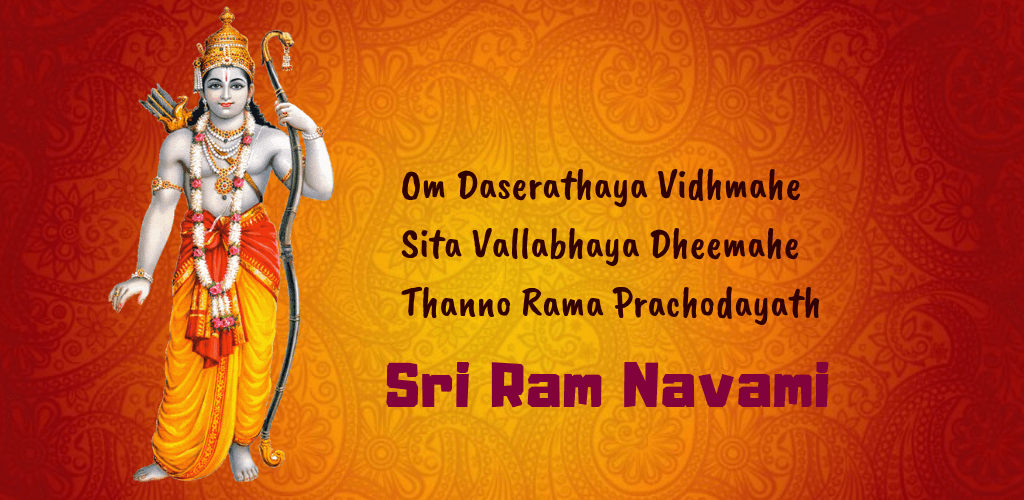 Lord Rama was born to Queen Kaushalya as a result of King Dasharatha performing Putrakameshti Yagna upon the advice of Sage Vashishta. The other queens Kaikeyi and Sumitra gave birth to prince Bharata and princes Lakshmana and Shatrughna respectively.
Lord Rama is believed to have been born during the Madhyayna period (noon) of the 9th tithi of Chaitra Masa Shukla Paksha. This corresponds to the period between 11 AM and 1 PM according to the western clock. This is the most auspicious time to perform Ram Navami rituals.
Ram Navami also marks the culmination of Vasanta Navratri or the Chaitra Navratri festival. Thousands of devotees throng Ayodhya, the birthplace of Lord Rama, to take a holy dip in the river Sarayu on Ram Navami. It is believed Lord Rama left the mortal world behind by immersing himself in River Sarayu and hence the tradition.
Lord Rama was born to Queen Kaushalya as a result of King Dasharatha performing Putrakameshti Yagna upon the advice of Sage Vashishta. The other queens Kaikeyi and Sumitra gave birth to prince Bharata and princes Lakshmana and Shatrughna respectively.
Lord Rama is believed to have been born during the Madhyayna period (noon) of the 9th tithi of Chaitra Masa Shukla Paksha. This corresponds to the period between 11 AM and 1 PM according to the western clock. This is the most auspicious time to perform Ram Navami rituals.
Ram Navami also marks the culmination of Vasanta Navratri or the Chaitra Navratri festival. Thousands of devotees throng Ayodhya, the birthplace of Lord Rama, to take a holy dip in the river Sarayu on Ram Navami. It is believed Lord Rama left the mortal world behind by immersing himself in River Sarayu and hence the tradition.
Birth of Rama – The Legend and the Astrology Facts
Now that we know the spiritual relevance of the festival, what is the legend behind this auspicious day? The story of Ram Navami begins with the King of Lanka, the mighty Ravan. During Ravan’s rule, the population was mercilessly terrorised, and people wished to attain freedom from the demon king and his menacing soldiers. However, no simple man could defeat the king because he had acquired the blessing of Lord Brahma which meant that he would never get killed by the Gods or Yakshas (demigod). Therefore, Ravan had become the most powerful being in the world and his might knew no bounds. Due to this terrorism and threat, all gods made their way to the eternal saviour Lord Vishnu and requested his help in handling the situation and freeing humankind from the menace of Ravan. Lord Vishnu acquiesced and this led him to take the incarnation of Lord Ram on Earth. Lord Ram was born to Kausalya, the wife of King Dasaratha, and he went on to defeat the monstrous King Ravan and free the people from his clutches. Ever since the day of Lord Ram’s birth is celebrated as Ram Navami. It was also on a Chaitra Shukla Navami that Tulsidas began writing the exalted treatise Ramcharitmanas. One App, Many Solutions – Get the Complete Astrology App from Clickastro
 Lord Ram was born in Ayodhya to King Dasharatha and Queen Kausalya of the noble Ikshvaku dynasty, and he led an exemplary life filled with virtues like modesty, generosity, and obligation. He suffered many wrongdoings at the hands of his relatives, and finally, after an immense struggle, Lord Ram and his faithful cohorts managed to kill the demonic King Ravana who was characterised by the vices of covetousness, oppressiveness, and arrogance.
The renowned sage Valmiki, in Ramayana, narrates the finer details of Lord Ram’s birth chart. He states that Queen Kausalya bore a son on the ninth day of Chaitra month, where the ruling star was Punarvasu and the presiding deity of the ruling star was Aditi. The asterism was in the ascendant and Sun, along with the four planets Mars, Jupiter, Saturn, and Venus were at their highest positions, while Jupiter with Moon was ascendant in Cancer. Some modern astrological studies suggest January 10, 5114 BC as Lord Ram’s date of birth.
The almighty Lord Ram is the seventh avatar of Lord Vishnu. According to the Hindu belief, Lord Vishnu incarnated on Earth, at regular intervals, to save people from the clutches of evil and establish the path of righteousness or dharma.
Lord Ram was born in Ayodhya to King Dasharatha and Queen Kausalya of the noble Ikshvaku dynasty, and he led an exemplary life filled with virtues like modesty, generosity, and obligation. He suffered many wrongdoings at the hands of his relatives, and finally, after an immense struggle, Lord Ram and his faithful cohorts managed to kill the demonic King Ravana who was characterised by the vices of covetousness, oppressiveness, and arrogance.
The renowned sage Valmiki, in Ramayana, narrates the finer details of Lord Ram’s birth chart. He states that Queen Kausalya bore a son on the ninth day of Chaitra month, where the ruling star was Punarvasu and the presiding deity of the ruling star was Aditi. The asterism was in the ascendant and Sun, along with the four planets Mars, Jupiter, Saturn, and Venus were at their highest positions, while Jupiter with Moon was ascendant in Cancer. Some modern astrological studies suggest January 10, 5114 BC as Lord Ram’s date of birth.
The almighty Lord Ram is the seventh avatar of Lord Vishnu. According to the Hindu belief, Lord Vishnu incarnated on Earth, at regular intervals, to save people from the clutches of evil and establish the path of righteousness or dharma.
As a major Hindu festival, Ram Navami is celebrated with great fervour across Hindu nations, especially India. The festival is highly popular among the Vaishnavite sect of Hindus. The celebration includes aspects like the narration of Ramayan, recitation of Ramaraksha Stotra, organisation of Kirtans, decoration of Lord Ram’s idol with beautiful ornaments and embellishments, and swinging the idol in a cradle. The Ramayana is continuously recited in the month of Chaitra, before the celebration. On the day of Ram Navami, the highlights of the legend are read aloud in the temple, with devotees thronging to pay respect to the Lord. Hindus embark on a cleansing and purifying spree before the auspicious festival by thoroughly cleaning their houses. The family shrine or household holy spot is decorated with small statues of Lord Ram. People place offerings of flowers and fruits in the shrine and recite prayers after an early bath and purification ritual. Some people also fast and restrict themselves to a fruit diet to honour the Lord on this day. Usually, items like onions, garlic, and wheat products are not consumed on Ram Navami. In some places, people follow a tradition where they tie an earthen pot filled with money on top of a tree. The tree’s base is covered with soft mud. Youth from the locality then try to climb up and claim this pot by forming human pyramids while other people throw water at them to stop them from achieving the task easily.
Free Couple’s Horoscope: A guide to a successful married life
In some parts of South India, the auspicious day is also considered the wedding anniversary of Lord Ram and Sita. On this day, the Bhadrachalam Temple in Telangana performs the world-famous ‘Sitarama Kalyanam’, or the ceremonial wedding of the divine couple. People also celebrate the occasion in their houses by marrying the idols of the deities and a procession is held in the evenings. Places associated with Lord Ram’s life, like Ayodhya in Uttar Pradesh, Sita Samhit Sthal in Bihar, Ujjain in Madhya Pradesh, and Rameswaram in Tamil Nadu see multitudes of devotees thronging to the holy places to welcome Lord Ram into their hearts and lives. Read about Akshaya TritityaAlong with being one of the most important festivals celebrated by Hindus across the globe, Ram Navami also symbolises the victory of good over evil, as Lord Ram, the embodiment of virtues, defeats King Ravan, who is full of vices and cruelty. The festival also signifies the establishment of the Dharma to beat the Adharma. The celebration of the festival begins with a water offering, in the early morning, to the Sun God as people believe that the Sun God was an ancestor of Lord Ram, as Lord Rama belongs to the Suryavanshi clan. Ram Navami is one of the five major holy festivals celebrated by Hindus. In earlier periods, this was one of the few festivals that the lower caste people were allowed to celebrate and hence it was celebrated with great fervour by all the classes of the society. People believe that fasting on this auspicious day will help them attain nirvana or salvation. Indeed, the Lord’s name itself means bliss or happiness and Lord Ram bestows these qualities on the people who remember and worship him with all their hearts. It is widely known that Lord Rama was born on Earth to bring back the lost glory in humanity, destroy evil, and save innocent mankind. It is important to understand his characters and virtues and imbibe them in our daily lives even as we gather to celebrate this auspicious festival and worship the Lord and Saviour. Indeed, we know that the life and journey of Lord Ram are an example for all of us. We can all attain salvation and happiness if we follow the virtues exemplified by the Lord in our own lives. He is, truly, an embodiment of noble qualities. It was because of these characteristics that he was called Maryada Purushottam or a perfect human being. Lord Ram’s actions and practices in life offer us the perfect example of how to lead our lives as good and exemplary human beings who bring positivity and goodness to the world. Lord Ram’s life choices were always in tune with dharma or the right path. He taught all of us the lessons of righteousness and goodness by showing his own example as an ideal son, an ideal brother, an ideal husband, an ideal friend, and an ideal king. During his rule, the earth was prosperous and happy, and his subjects were full of devotion and joy. ‘Ram Rajya’ is the name given to the ideal rule which embodies justice, happiness, harmony, and prosperity for all humans. We must always attempt to be like Lord Ram even as we celebrate the auspicious festival with all our hearts.
Ram Navami is the birthday of Lord Rama. It is celebrated on the 9th tithi of Chaitra Masa Shukla Paksha or the 9th day of the bright lunar phase in the month of Chaitra, which is March-April in the western calendar. Ram Navami 2025 falls on Sunday, 6th April. Lord Rama is one of the most famous icons of Hindu culture. His life, majorly covering the period of his marriage to Sita and rescuing her from Emperor Ravana who had abducted her has been immortalised in the grand epic Ramayana. Lord Rama is considered to be the seventh avatar of Lord Vishnu. Lord Rama is called ‘maryadapurushothaman’, meaning the epitome of a well-mannered man. More than his killing of Ravana, Rama’s feat of constructing a floating bridge across the ocean to Lanka is the most retold story in the epic of Ramayana. Fallen portions of the ancient bridge can still be spotted in Palk Strait. Lord Rama is the most celebrated icon of Hindu culture. Therefore his birthday is naturally of immense significance to his billions of devotees.
Ram Navami is not celebrated twice. It is a misunderstanding that Ram Navami occurs twice a year. Ram Navami is the birthday of Lord Ram. It is an annual event that falls on the 9th day of Shukla Paksha or the bright lunar phase during the month of Chaitra, which corresponds to the March-April period in the western calendar. The confusion arises due to the two Navratris that are celebrated every year, which are closely associated with events in the life of Lord Rama as well. One Navratri is celebrated during the first nine days of the Chaitra month known as the Chaitra Navratri. The other Navratri is celebrated during the first nine days of the Ashwina (September – October) known as Ashwina Navratri. This means Rama Navami comes as part of Chaitra Navratri, and his killing of Ravana happened the day after Ashwina Navratri which is celebrated as Dussehra. Hence, the confusion regarding the two Ram Navami. Before Lord Rama’s time, Chaitra Navratri used to be the more popular of the two Navratris. Since then, the cult of Lord Rama has grown to become so big that Ram Navami swallowed the Chaitra Navratri celebration. In the modern-day, Ashwina Navratri is celebrated with more fervour than Chaitra Navratri. However, it needs to be specified that there is only one Ram Navami a year.
Ram Navami is a very auspicious day. As mentioned earlier, it is the 9th day during the bright lunar phase of the Chaitra month. It is also famous as part of Chaitra Navratri. The importance of the month of Chaitra is that it comes during the equinox time as per the Sidereal calendar. So the length of the days and nights are more or less the same during this time. Navratri signifies the triumph of good over evil. Lord Rama, born on the 9th day of Chaitra Navratri, is best remembered for vanquishing the demon emperor Ravana and freeing the world from his despotic rule. Of the two lunar phases, the bright phase or Shukla Paksha is considered more auspicious than the dark phase of the Krishna Paksha. Since Goddess Durga defeated the demon Mahishasura on the ninth day of the bright phase, this day is considered auspicious. Navami tithi as such is not seen as an ideal day for auspicious tasks. But the month of Chaitra is traditionally seen as the start of the Hindu New Year. So Chaitra Navratri and consequently Ram Navami are considered auspicious.
Observing Ram Navami vrat is very important to devotees of Lord Rama. The vrat usually begins from the previous night and extends till midnight of Navami day. The staunchest of devotees undergo nirjala vrat, which is fasting without taking even water. This is not possible for normal devotees, especially those with health problems. Such people follow a partial fast that is limiting their diet to certain food items. Potatoes made in any form without haldi, garlic, ginger or onions are advised. Sendha Namak or rock salt is used for the preparation of the food. Consuming curd, milk, tea, coffee, fruits and vegetables is not permissible as part of Ram Navami vrat. Most people fast with just a single meal during the 24 hours, and usually, this meal is limited to fruits. Devotees perform special worship and observe homa to Lord Ram’s picture or idol during this day. Observing Ram Navami vrat is a strongly followed tradition believed to be over 5000 years old. The devotees observing the fast are blessed with happiness, peace, wealth, and prosperity.
Check Your Wealth and Fortune Horoscope

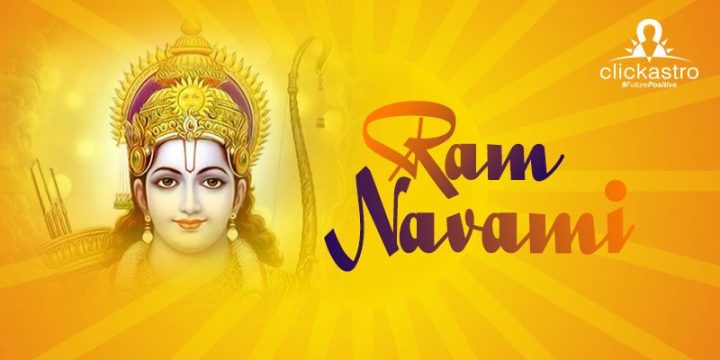



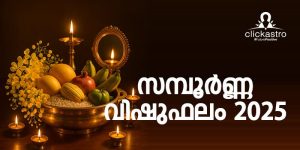
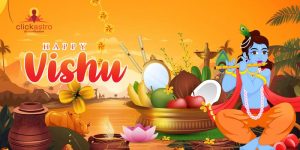
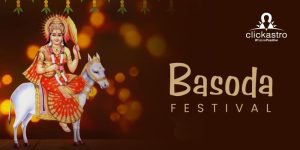
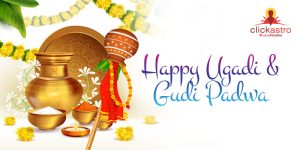
Hi my baby’s DOB 06 FEBRUARY 2019 11:14PM in mysore. What are the best dates for ear piercing?
Hi,
Please take the help of our expert astrologers to find the exact timings. https://www.clickastro.com/astrology-consultancy?ref=cablog
My name Binu pal
Dob-30-08-1983
Place -Ambala city
Time 21: 15 pm, mujhe confidence ni aata, maan peche hat jata hai agar kisi kaam ko karne lagta huin, Maine pukhraj pehna huya hai, aap koi gemstone recommend kare
Hi,
Gemstones have some mystical powers that would help to prevent the negative influences of planets. Clickastro Gem Recommendation Report studies your birth chart and suggests the use of specific gemstones to overcome specific ailments or obstacles in life. Find your gem stone here https://www.clickastro.com/gemstone-recommendation
Great! Detailed description of each Samvatsara for a layman like me helps build some basic / fundamental understanding
thank you very much
Jay Ram,Jay Ram Navami ,hvala,hvala ,hvala